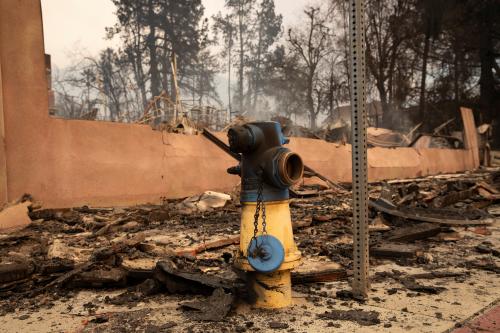The 50th anniversary of Earth Day this year presents a unique opportunity to envision a future where dramatic reductions in pollution across the globe are the status quo. Efforts to mitigate the horrific global health crisis caused by COVID-19 have caused a significant decline in emissions and other pollutants. But, obviously, we need a better solution to emissions reductions than stopping the economy.
This moment presents the opportunity to reexamine what types of policy and regulatory changes are needed to ensure the reductions in air pollution and emissions are necessary for the health of the economy.
An economy-wide price on carbon offers a cost-effective strategy to achieve emissions reductions. A carbon price discourages carbon pollution by making polluters pay for the emissions they generate. Yet several important policy questions will likely remain, even when a carbon price is eventually implemented. In particular, we need to understand how a carbon price should interact with existing environmental regulations.
A new video, building from a Hamilton Project policy proposal by Roberton Williams III of the University of Maryland and the Climate Leadership Council titled, “How to Change U.S. Climate Policy After There is a Price on Carbon,” answers these questions. The Hamilton Project video explains how existing emissions policies could be updated once a sufficiently high carbon price is in place. It also underscores the importance of suspending—not repealing—regulations, in the event that a carbon price is later rolled back.
Set in the year 2040 with a carbon price in place, the video highlights five key recommendations from Williams’ policy proposal. These include:
- Modifying renewable energy tax expenditures to target early stage development—when positive spillovers are largest—once a carbon price is in place.
- Suspending stationary source CO2 regulations and CAFE standards for vehicles, since a carbon price already targets these CO2
- Eliminating tax expenditures and credits for oil and gas producers since they tend to increase emissions.
- Banning federal preemption of state carbon pricing programs, renewable portfolio standards, or low carbon fuel standards, to ensure states could keep regulations in place to target other market failures.
- Removing redundant policies, while leaving in place policies targeting other pollutants.
Evidence-based and economically efficient policy and regulatory changes, such as robust carbon pricing, should be implemented as soon as possible. With the implementation of carbon pricing policymakers and regulators will have an opportunity to reform existing carbon regulations, making them as efficient as possible.
To learn more read the full report.
The Brookings Institution is committed to quality, independence, and impact.
We are supported by a diverse array of funders. In line with our values and policies, each Brookings publication represents the sole views of its author(s).







Commentary
How to reduce emissions as much as possible at the lowest cost
April 21, 2020